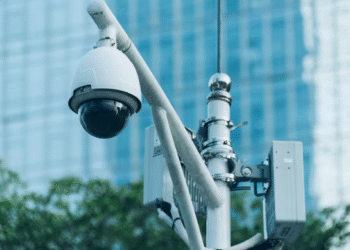Creating a successful dating app requires more than just an idea. It demands a structured development process, advanced technology, deep understanding of user behavior, and the ability to deliver a seamless experience. A professional Dating App Development Company helps transform a raw concept into a scalable and secure application through a series of focused technical phases.
Understanding the Vision and Business Goals
Every dating app begins with an idea, but turning that idea into a viable product requires clarity.
1. Project Discovery
The development company begins with structured discussions to understand the app’s main objectives. This includes identifying the core issue the dating app aims to address—whether it’s casual dating, serious relationships, or serving a niche group. Understanding the target audience is key, including their age group, location, and preferences. These insights help determine feature priorities and UI decisions.
2. Requirement Documentation
Once the concept is well defined, the development team prepares a detailed requirement specification document. This outlines various user types—such as guest users, registered users, moderators, or admins—and defines what each role can do within the system. All major user flows, such as onboarding, profile creation, and match interactions, are mapped step-by-step.
The document categorizes features into core (like user registration and matching) and optional (like video chats or AI-based suggestions), allowing the project to prioritize development and budget planning.
Market and Competitor Analysis
A good Dating App Development process includes analyzing the current landscape.
1. Target User Profiling
Understanding the target audience is essential for building a successful dating app. The development company collects data to determine which platforms users prefer—whether iOS, Android, or both. This choice affects the app’s design framework and development tools.
User interface preferences are also evaluated, such as layout simplicity, color schemes, and interaction styles. Some users may prefer swipe-based interactions, while others value detailed search filters.
2. Competitive Audit
To build a competitive product, the development team examines existing dating apps like Tinder, Bumble, Hinge, and others tailored to specific audiences. They study how these platforms handle matching logic, onboarding flows, and engagement tactics.
By identifying the features that work well—and those that fall short—the team highlights opportunities to improve. For example, if most apps lack strong video verification or real-time translations, these can be added as differentiators.
UI/UX Design and Prototyping
A dating app’s success depends heavily on user experience.
1. Wireframing and Flow Mapping
The design phase starts with creating wireframes that outline how users will interact with the app. Designers map essential flows, such as setting up a profile, browsing potential matches, initiating chats, and completing payment processes. These wireframes help visualize the app’s layout and ensure that navigation between screens is intuitive. This step also clarifies how different features will connect, reducing confusion during development.
2. Visual Design
Once wireframes are approved, the focus shifts to the visual presentation. The UI must be clean and visually appealing to engage users. Designers choose colors, fonts, icons, and layout structures that reflect the brand identity and enhance usability. Every element is selected with consistency and clarity in mind to ensure that users of all ages can navigate the app comfortably on various devices.
3. Interactive Prototypes
Before development starts, designers build interactive prototypes using tools such as Figma or Adobe XD. These prototypes simulate real user interactions, allowing stakeholders to click through the app and provide early feedback. Testing these mockups helps identify usability issues and refine the experience without writing any code. It ensures that the final product meets user expectations and reduces rework during development.
Choosing the Technology Stack
The technology stack depends on features, performance needs, and platform preference.
1. Frontend Development
For building the dating app’s user interface, developers choose frameworks based on project needs. Cross-platform frameworks like React Native and Flutter allow a single codebase to run on both iOS and Android devices, speeding up development and reducing costs. These frameworks also provide near-native performance and smooth user experiences.
In cases where maximum performance or platform-specific features are required, native development is preferred. Swift is used for iOS apps, while Kotlin serves Android development. Native approaches offer better optimization and access to platform-specific APIs, which is crucial for complex animations or hardware integration.
2. Backend Development
The backend handles all server-side logic, data management, and communication between the app and the database. Popular frameworks include Node.js for event-driven, fast I/O operations; Django for its security features and rapid development; and Laravel, which offers a clean PHP-based framework.
Databases like MongoDB and PostgreSQL provide reliable storage of user data, profiles, matches, and chat histories. MongoDB’s document-oriented model fits flexible data structures, while PostgreSQL supports complex queries and transactions.
3. Third-Party Integrations
To deliver a full-featured dating app, integrating third-party services is essential. Payment gateways like Stripe or Razorpay handle in-app purchases securely, enabling subscription plans or premium feature unlocks.
Push notifications use services like Firebase Cloud Messaging to send timely alerts and keep users engaged. Location-based features depend on APIs like Google Maps to provide geolocation, distance calculations, and map displays.
Building Core Features
A Dating App Development Company develops features based on project scope. Common components include:
1. User Registration and Login
A dating app must support multiple authentication methods for convenience and security. Social media sign-ins, including Google, Facebook, and Apple, allow quick access while reducing password fatigue. Email and phone number OTP (One-Time Password) verification provide additional secure options.
2. Profile Management
Users create rich profiles by adding photos, writing bios, and specifying personal details. The app should allow filtering preferences, such as gender, age range, and distance, enabling more relevant matches.
Users also control their privacy by managing profile visibility. Options include public profiles, limited visibility to matches only, or temporary hiding.
3. Matching Algorithm
The core of any dating app is the matching system. Most apps start with geolocation-based matches, connecting users nearby.
Interest-based matching considers user preferences, hobbies, and behaviors. More advanced apps incorporate AI or rule-based engines to improve match relevance using data patterns and machine learning.
4. Messaging System
Instant communication is vital. Real-time chat is usually implemented via web sockets or similar technologies to provide low-latency messaging.
Supporting multimedia, such as image sharing and voice notes, enhances interaction. Features like read receipts and typing indicators increase engagement and create a more natural conversation flow.
5. Admin Panel
A robust admin panel helps manage the platform efficiently. It includes user management tools for monitoring registrations and account statuses.
Moderation features allow admins to handle reports, block users, and enforce community guidelines. The panel also provides content control options and analytics dashboards to track user activity and app performance.
Monetization Strategy
The app’s revenue model is planned during development.
Popular Options:
- Freemium: Freemium is a widely used model in dating apps. Users can access basic features for free, such as profile creation, limited swipes, and basic matching. Advanced capabilities—like unlimited likes or viewing who liked them—are locked behind a paywall. This model encourages users to try the app without barriers and upgrade later based on perceived value.
- Subscriptions: Subscription-based plans offer premium tiers, often labeled as Gold, Plus, or Elite. These plans typically include advanced search filters, location-based matching in other regions, and visibility into who liked the user. Monthly, quarterly, and annual billing options give users flexibility and generate predictable recurring revenue for the business.
- Boosts: Boost features allow users to pay for temporary visibility increases. A profile may be highlighted or pushed to the top of match queues for a fixed time, often 30 minutes to an hour. This creates a sense of urgency and increases user engagement while generating additional micro-transaction revenue.
- In-App Purchases: Users can purchase virtual items such as gifts, additional swipes, profile themes, or even limited-time access to premium features. These one-time purchases provide personalization options and gamify the experience, leading to higher user retention and revenue without requiring full subscription upgrades.
Security and Privacy Features
User safety and data protection are critical in dating apps.
Key Security Practices:
- End-to-End Encryption for Chats: To ensure message confidentiality, end-to-end encryption is implemented in the messaging system. This approach encrypts messages on the sender’s device and decrypts them only on the recipient’s device. Even the app’s servers cannot access the content. This protects sensitive conversations from interception and unauthorized access.
- GDPR and Local Privacy Compliance: A dating app must comply with privacy laws such as GDPR (for Europe) and other regional regulations. This involves clear data collection policies, user consent mechanisms, and the right to access, modify, or delete personal data. Data retention policies must also be defined and enforced through the backend architecture.
- Secure APIs and HTTPS for All Transactions: All client-server communication must occur over secure HTTPS connections. APIs are protected with authentication tokens to prevent unauthorized access. Rate limiting and input validation are enforced to protect against threats such as brute-force attacks, injection attempts, and session hijacking.
Testing and Quality Assurance
A professional Dating App Development Company ensures quality through multiple testing cycles.
Types of Testing:
1. Unit Testing: Component-Level Validation
Unit testing targets individual components, functions, and services within the app. Developers write test cases to validate inputs, outputs, and internal logic. This ensures that small units of code behave as expected and helps catch issues early before they affect other parts of the system.
2. Integration Testing: System Interaction Checks
Integration testing verifies how different modules work together. It checks data flow between the frontend and backend, integration with APIs, and third-party services like payment gateways or geolocation. This step ensures that the app’s components interact reliably under different conditions.
3. UI/UX Testing: Interface and Usability
This type of testing evaluates the app’s visual layout and interactive behavior. Testers check for proper rendering on different devices and screen sizes, intuitive user navigation, and accessibility compliance. The goal is to identify layout issues or user friction that could affect engagement.
4. Security Testing: Data Protection Validation
Security testing is used to uncover vulnerabilities in authentication, session management, and data access. Tests are run to ensure protection against threats like SQL injection, data leaks, and unauthorized access. Encryption, secure storage, and permission control mechanisms are validated in this phase.
5. Performance Testing: Speed and Stability
Performance testing checks how the app performs under load. This includes measuring response times, app launch speed, memory usage, and the number of concurrent users the system can handle. Testing tools simulate real-world conditions to ensure the app performs well during peak usage.
6. Beta Testing: Controlled User Feedback
In beta testing, the app is released to a small group of real users. Their feedback helps uncover bugs and usability issues that internal testing might miss. Beta testing bridges the gap between development and public launch, ensuring a more stable and user-friendly product.
Deployment and Launch
Once testing is complete, the app is prepared for public release.
Pre-launch Activities:
- Setup on App Store and Google Play: Before the app goes live, the development team prepares separate build packages for iOS and Android platforms. These builds are uploaded to the Apple App Store and Google Play Console. Each store requires platform-specific configurations, such as bundle IDs, signing certificates, and version control. Test builds are first reviewed using tools like TestFlight (iOS) and internal testing tracks (Android).
- Create App Metadata: To ensure visibility and downloads, detailed metadata is submitted with the app. This includes the app title, short and full descriptions, category, and target audience. High-quality screenshots, promotional images, and demo videos are uploaded to visually communicate the app’s key features. Keywords are carefully selected to improve search visibility in each store’s algorithm.
- Enable Crash Reporting and Analytics Tools: Before release, tools for real-time monitoring are integrated. Crash reporting tools like Firebase Crashlytics help identify bugs after launch. Analytics tools track user behavior, session times, screen flows, and retention metrics. These tools allow the team to make data-driven improvements post-launch and quickly address technical issues.
- Final Round of Review for Compliance: The last step involves a detailed internal review of the app to ensure it meets all App Store and Google Play policies. This includes checking for content restrictions, permissions usage, data privacy declarations, and age-appropriate rating settings. Non-compliance can delay approval or lead to rejection, so every requirement must be double-checked.
Conclusion
Creating a dating app involves much more than coding a few screens. It requires market insight, technical skills, thoughtful design, and long-term support. A skilled Dating App Development Company brings all these elements together. From concept to launch and beyond, every step must be carefully planned and executed to build a successful, scalable, and secure platform.
By focusing on core functionality, security, and user experience, your dating app can compete in a saturated market and retain loyal users. Partnering with the right development team ensures that your idea becomes a product that performs well technically and delivers real value to its users.






